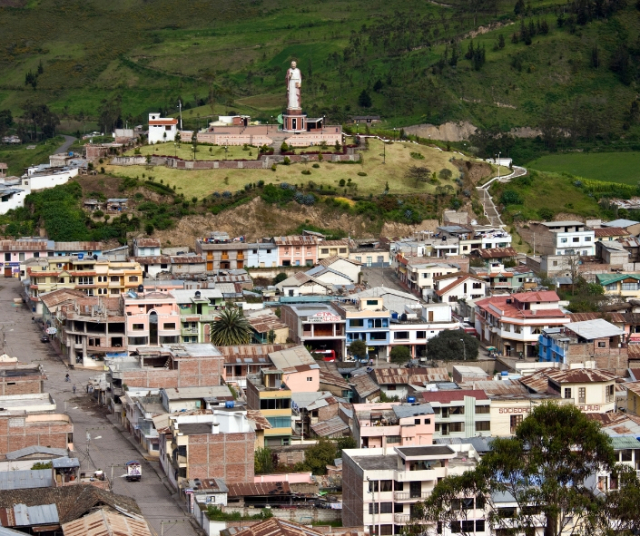June 25 is a very special date in Ecuador, as it celebrates the day of the province of Chimborazo, one of the most emblematic and fascinating regions of the country. In this article, we will dive into the history, culture and meaning behind this celebration, exploring the highlights of the province of Chimborazo and its importance to the Ecuadorian people.
History of the Province of Chimborazo:
The history of the province of Chimborazo is a fascinating narrative that spans centuries of political, social and cultural changes in the central region of Ecuador. From its ancient pre-Columbian origins to the Spanish colonial era and the modern era, the province of Chimborazo has witnessed a series of events and transformations that have left an indelible mark on its landscape and its identity.
Precolumbian era:
Before the arrival of the Spanish in the 16th century, the region we know today as the province of Chimborazo was inhabited by diverse indigenous cultures, each with its own language, traditions and ways of life. Among these cultures were the Puruháes and the Cañaris, two ethnic groups that left a lasting cultural legacy in the area.
The Puruháes, an agricultural and warrior civilization, settled in the Chimborazo region around 500 AD. Their territory encompassed vast expanses of fertile land on the slopes of the Chimborazo volcano, where they grew corn, potatoes, and other staple crops. The Cañaris, on the other hand, were known for their skill in metallurgy and ceramics, as well as their political and military organization.
For centuries, the Puruháes and Cañaris maintained a complex relationship with the region's natural landscape, venerating the Chimborazo volcano as a sacred deity and using its mineral wealth to create objects of ritual and ceremonial value.
Spanish Colonial Era:
The arrival of the Spanish to Latin America in the 16th century marked the beginning of a new era for the Chimborazo region. Spanish conquistadors, led by figures such as Francisco Pizarro and Diego de Almagro, came to the region in search of wealth and power, and quickly brought the local indigenous populations under their rule.
In 1534, Diego de Almagro founded the city of Riobamba, which would become the capital of the province of Chimborazo during the colonial era. The city established itself as an important administrative and commercial center in the region, with an economy based on agriculture, mining and trade in basic goods.
During the colonial era, Chimborazo experienced rapid growth and development, with the construction of churches, convents, plazas and colonial houses that can still be seen in the city of Riobamba today. However, this period was also marked by conflicts and tensions between the Spanish settlers and the native indigenous population, who were subjected to slavery and exploitation.
Modern Era:
Following Ecuador's independence in 1830, Chimborazo became a province in the new Ecuadorian state. During the 19th century, the province experienced a period of economic growth and development, especially in the agricultural and mining sectors. The construction of roads and railways in the region facilitated the transportation of agricultural and mineral products to local and foreign markets.
In the 20th century, Chimborazo continued to be an important province in Ecuador, with a diversified economy that included agriculture, livestock, mining and tourism. The city of Riobamba became an important educational and cultural center in the region, with the founding of academic institutions and the promotion of arts and culture.
Culture and Traditions of Chimborazo:
The province of Chimborazo is known for its rich cultural tradition, ranging from music and dance to crafts and gastronomy. Ecuadorian folk music, with its cheerful melodies and infectious rhythms, has its roots in the indigenous communities of Chimborazo and other Andean regions. Instruments such as the guitar, quena and charango are an integral part of the province's traditional music, which celebrates the natural beauty and cultural richness of the region.
In addition to its vibrant music, Chimborazo is also known for its colorful festivities and celebrations. June 25, the day of the province of Chimborazo, is a special occasion when the inhabitants of the region come together to celebrate their identity and cultural heritage. During this holiday, parades, concerts, fairs and other cultural activities are held in honor of the province and its people.
Meaning of the Celebration:
The celebration of the day of the province of Chimborazo has a deep meaning for the inhabitants of the region and for all the Ecuadorian people. Beyond being an opportunity to celebrate the rich history and culture of the province, this holiday is also a time to reflect on the challenges and opportunities facing the region today.
Chimborazo is a province with great ethnic and cultural diversity, which is home to indigenous, mestizo and Afro-descendant communities that have contributed significantly to the identity and development of the region. The celebration of the day of the province of Chimborazo is an occasion to recognize and value this diversity, as well as to promote inclusion and equal opportunities for all inhabitants of the province.
Challenges and Opportunities:
Although Chimborazo is a province rich in natural and cultural resources, it also faces a series of challenges in terms of economic development, education and health. Poverty and inequality remain persistent problems in the region, especially in rural and marginalized communities. However, the province also has great potential for growth and prosperity, especially in sectors such as sustainable tourism, organic agriculture and environmental conservation.
The celebration of the day of the province of Chimborazo is an occasion to celebrate the history, culture and identity of one of the most fascinating and diverse regions of Ecuador. Beyond being a colorful and joyful holiday, this celebration is a reminder of the value and importance of preserving and promoting the cultural and natural heritage of Chimborazo for future generations.
